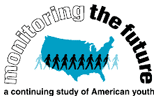

Executive summary and full report.
Videocast, posters, participant list, etc.
PBS Series Information - "Reality Television for Teens"
BRIGHT PSA: This PSA uses scientific data as the basis for explaining the effects of drug use on the brain. We now have scientific evidence showing that people can't always choose to stop using drugs. See this video in Spanish.
Club drugs are being used by young adults at all-night dance parties such as "raves" or "trances," dance clubs, and bars. MDMA (Ecstasy), GHB, Rohypnol, ketamine, methamphetamine, and LSD are some of the club or party drugs. NIDA-supported research has shown that use of club drugs can cause serious health problems. Used in combination with alcohol, these drugs can be even more dangerous.
No club drug is benign.
To combat the increasing use of club drugs, NIDA and its partners launched a national research and education initiative, "Club Drugs: Raves, Risks, and Research" in December 1999.
To find information on a particular item of interest, please use our site search below:
This searches the National Instituteon Drug Abuse web site.
